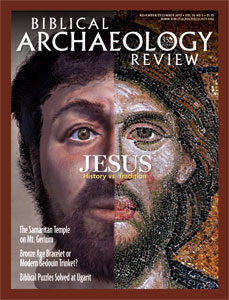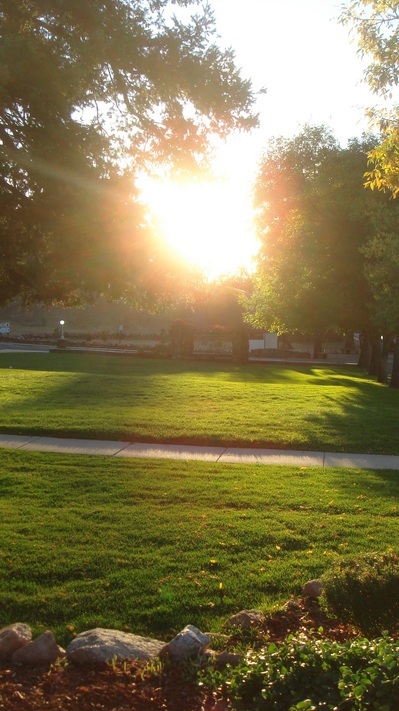Let’s start with something Freyne says near the beginning of the interview with Hershel Shanks, “Some people confuse the notion of the historical Jesus with the notion of the actual or real Jesus. I think the historical Jesus is construct, a theological construct, really. Its the figure of Jesus as he is represented in the documents of Christian faith as a historical person.” Though this distinction is often made in scholarly circles, it often comes as a surprise to the lay person not conversant with the ongoing scholarly discussion. Sean is in fact saying several things at once here: 1) that the historically recoverable or reconstructible Jesus (using the historical method) is at best a subset of the historical person Jesus, and a subset therefore of the real Jesus. What we can say about Jesus using the historical method is certainly less than what is true about the real or historic person named Jesus of Nazareth; 2) both the modern reconstructions of who and what Jesus was, and the images of Jesus we have in early Christian literature, including the Gospels, are a step removed from the real Jesus. They are both reconstructions. 3) though some scholars would not own up to it, a reconstruction of Jesus, whether minimalist or maximalist is a theological construct, not least because there is an irreducible amount of theological subject matter and substance imbedded in our sources about the real Jesus. A non-theological Jesus is as much of a non-starter as a non-Jewish Jesus. It is interesting that in response, Hershel says “I thought the historical Jesus was opposed to the theological Jesus”. This is a common misconception, but even those who try to present a purely social and non-religious portrait of Jesus, in fact are engaging in a theological enterprise, namely the deconstruction of the irreducibly theological character of the Gospels.
One of the areas of Sean Freyne’s expertise is the archaeology and social setting of Galilee, and one of the things he is very clear about is that the archaeology done in Galilee has confirmed not merely the Jewishness of Galilee in general, but probably also the Jewishness of Jesus to some extend. Freyne is right that early Judaism absorbed the blow of the Hellenistic invasion, adopted and adapted some of its cultural ways, including a certain use of Greek, and of Greek dining practices and educational practices (e.g. rhetoric) but without renouncing its monotheism, or its own religious praxis. This is the right and balanced way to evaluate the relationship of Judaism and Hellenism, as was shown long ago by Martin Hengel and others. Jews in Galilee remained Jews and did not become totally assimilated to Hellenism, though they certainly were affected by it in important and obvious ways. No one who has visited the synagogue at Sephoris and seen the incredible astrological wheel mosaic in the synagogue floor could doubt that. Freyne puts it this way “It accommodated itself to Hellenism in various ways. But it also vigorously resisted abandoning its own distinctive world view.” This is correct. It is this balanced perspective that is lost in the work of people like Brad Young on the one hand, who wants to read Jesus in the light of later rabbinic Judaism, and it is equally lost in the work of those who would like to turn Jesus into an itinerant Cynic philosopher. He was neither a rabbi nor a Cynic philosopher, he was a Jesus sage and seer, combining the wisdom and apocalyptic traditions in his ministry, as Freyne rightly notes (drawing to some extent on my two books— Jesus the Sage and Jesus the Seer.
Freyne stresses Jesus’ close relationship with John the Baptizer (please don’t call him a Protestant Baptist, though he certainly protested and baptized). Freyne is of the opinion that John 3.26 suggests that for a time Jesus was a member of the Baptizer’s movement, and this theory is used to explain the baptism of Jesus by John. The problem with this view is several fold: 1) many were baptized by John who did not become his disciples; 2) John 4.1-2 specifically denies that Jesus ever baptized anyone, a practice the followers of John did do, and 3) the message of Jesus, as Freyne accepts, was dramatically different from John’s in various respects. It was John, not Jesus, by and large, that proclaimed the imminent judgment of God upon Israel. Jesus by contrast preached the Good News of divine liberation, and inbreaking salvific Kingdom. Freyne is probably right however, that we should connect John the Baptizer with the Qumran community. It surely can’t be an accident that the theme verse of the Qumran community from Isaiah (‘the voice of one crying: ‘In the wilderness prepare a highway for our God….” is the same verse used to introduce John to us in the Gospels, and its base camp locale by the Dead Sea is the same sort of place we find John plying his trade, as opposed to in the Temple in Jerusalem, even though his father had done so.
Next Sean emphasizes that Jesus had a new view of family. Not the family of kinship ties, but rather the family of faith, those who follow Jesus and seek to do God’s will and are his spiritual kin, are seen as the primary family now that the Kingdom is breaking into human history (see e.g. Mk. 3.31-35). About that text Freyne says “For me, those are some of the core moments in trying to reconstruct the way I see Jesus developing a new vision within the contemporary varieties of Judaism in Galilee.” I agree entirely with this assessment. Interestingly, Freyne things Jesus is deeply indebted to the Servant material in Is. 40-66, and to the more universal vision of salvation found there. He says “The Jesus movement is thus a renewal group built around the figure of the servant of God, as depicted in Isaiah who is not militantly opposed to foreigners. Yet he addresses his message to Israel.” I think this is part of the picture, but what is notable for its absence in Freyne’s answers is any discussion of Jesus’ indebtedness to Daniel 7 and the early Jewish Son of Man traditions. This I would suggest is a major oversight. Yet Freyne argues that while Jesus retains the apocalyptic world view that John stresses, he is less indebted to it than John. Jesus puts far more emphasis on the wisdom tradition, as his parables show. It seems to me that one has to realize Jesus is equally indebted to sapiential and apocalyptic traditions, and indeed various of his parables focus on things apocalyptic or eschatological.
One of the interesting and welcome conclusions of Freyne based on the archaeology of Galilee is a corrective to those who want to see the situation in Ga
lilee as one of supreme oppression of the poor and the peasants by the overlords, both Herod and Rome. The archaeology simply does not bear out this conclusion, any more than it bears out the conclusion that Galilee was highly Hellenized in a non-Jewish way. What the archaeology shows is that there was considerable prosperity in Galilee in Jesus’ day, that lots of ordinary people including farmers and fishermen were making a good living (see the palatial fisherman’s villa at the archaeological site at Bethsaida), and so the attempt to turn Jesus not a peasant or a leader of a peasant revolt, or some sort of Che Guevera figure, simply is not historically accurate. For one thing, Jesus is literate— he can read scrolls, which puts him in the top 10% of the culture in terms of literacy. For another thing he is a artisan living in a village next to a boomtown where there was plenty of work for such folk— Sephoris.
Freyne, like many other scholars of his ilk, thinks there is some historical substance in the birth narratives, but that at the end of the day, Jesus was likely born in Nazareth, not in Bethlehem. He thinks the birth narratives are more theologically embellished than the ministry portions of the Gospels. He does allow that Jesus’ family may have originally been Judean, with connections to Bethlehem, he even suggests his family may have moved from Judea to Galilee. What he does not note is that the town Nazareth has as its name -‘Netzerit’ which means Branch town, an appropriate name for a town largely inhabited by the descendants of the root of Jesse (see my forthcoming little harmony of the Gospel—- The Gospel of Jesus).
To me the most disappointing part of the interview comes at the end, where Sean is asked point blank, ‘Do you envision a physical resurrection [of Jesus]’ and he replies “No, absolutely not. Resurrection from the dead should not be confused with resuscitation of a corpse even when some of the appearance stories give that impression as part of their narrative realism.” The problem with this answer is several fold: 1) Tom Wright has shown in huge detail that what resurrection meant in early Judaism is something that happens to a physical body after death (see his Resurrection and the Son of God); 2) he is however right that what happened to Jesus was not merely a resuscitation of a corpse, say like the case of Jairus’ daughter. Jesus did not return to a merely mortal frame still subject to disease, decay, and death. Jesus went forward into a new sort of embodied existence that was immune to the 3 D’s just mentioned, and to suffering as well. In short Jesus is the first, and so far, the only person to have a resurrection body. Everyone else who has ever been brought back to life have gone on to die again in the same mortal skin. Resurrection is more than resuscitation of a corpse, but at the same time, it is something that happened to the body of Jesus, transforming it into a new kind of bodily existence, which while still tangible ‘and physical’ gained some unique properties in the process.


